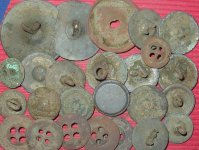kiwi taff
Newbie
Hi,
Perhaps this is an old subject, however, can anyone tell me between what years copper sheathing was used?
Thanks
Perhaps this is an old subject, however, can anyone tell me between what years copper sheathing was used?
Thanks



